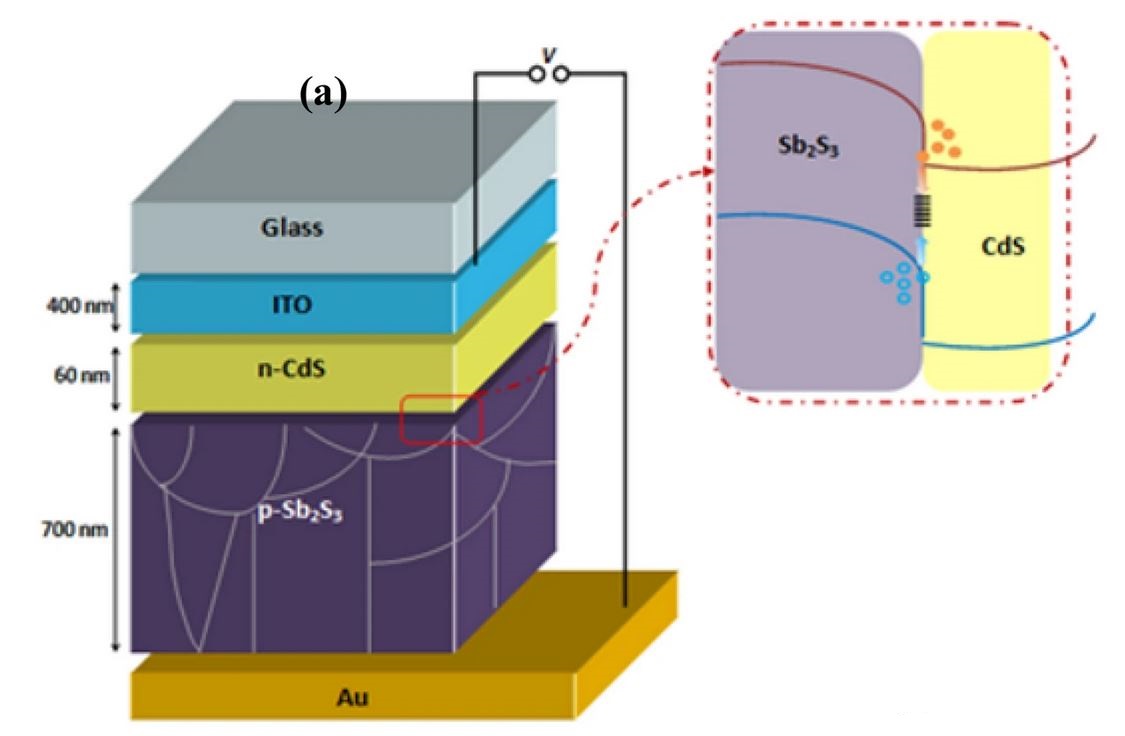An international research team has outlined a new design for solar cells based on antimony trisulfide (Sb2S3) that can reportedly result in 30% higher efficiency compared to existing Sb2S3 solar cell concepts.
This kind of cell typology has, so far, been far from reaching commercial production, due to the low crystallinity and high resistivity of the Sb2S3 film, which affects the device's performance in terms of efficiency. Sb2S3, however, has a good bandgap, ranging from 1.70 to 1.90 eV, and a remarkable light absorption coefficient.
In the study “Scrutinizing transport phenomena and recombination mechanisms in thin film Sb2S3 solar cells,” published in scientific reports, the scientists explained that Sb2S3 devices can achieve an efficiency of up to 26% under the radiative limit, but defects in the absorber material commonly decrease it to around 8%.
“The novelty of this work lies in its detailed theoretical examination of Sb2S3 solar cells, specifically focusing on the intricate interplay of various transport mechanisms such as tunneling-enhanced recombination, Sb2S3/CdS interface recombination, and non-radiative recombination,” they added.
Their analysis showed that two of the key factors influencing Sb2S3 cell performance are cadmium sulfide (CdS) layer doping and thickness, which have an impact on the device's open-circuit voltage and short-circuit current. Furthermore, they found that bandgap and electron affinity have an influence on light absorption and charge transfer, respectively.
They also explained that fine-tuning the CdS layer with a high bandgap allows a greater number of photons to effectively penetrate the absorber. “Simultaneously, a lower electron affinity plays a crucial role in improving key parameters like short-circuit current and open-circuit voltage, ultimately boosting the overall conversion efficiency of the solar cell,” they emphasized. “This enhancement stems from the establishment of an optimal band alignment at the CdS/Sb2S3 interface, reducing the barrier height and facilitating the smooth passage of electrons from the absorber layer to the CdS.”
The group also analyzed the effect of bulk traps located at the interface between CdS and Sb2S3 and found that the influence of these interfacial defects may have an impact on carriers’ minority lifetime, diffusion length, and surface recombination velocity. “Scientists can develop strategies to mitigate their adverse effects,” the academics said. “This includes engineering interface structures, optimizing material properties, and enhancing passivation techniques to minimize recombination and improve the reliability of the CdS/Sb2S3 interface, ultimately leading to more efficient and robust solar cell designs.”
The team outlined a simple solar cell architecture with the proposed optimized parameters. The device was based on a substrate made of glass and indium tin oxide (ITO), a CdS layer, an Sb2S3 absorber, and a gold (Au) metal contact.
Simulated and tested under standard illumination conditions, the device showed a power conversion efficiency of 11.68%, an open-circuit voltage of 1.16 V, a short-circuit current density of 9.5 mA cm−2, and a fill factor of 54.7%. “Notably, the optimized Sb2S3 solar cell not only exhibits superior performance but also demonstrates enhanced reliability in mitigating interfacial traps at the CdS/Sb2S3 interface, thanks to improved band alignment control and parameter optimization,” the scientists said.
The research group comprised scientists from Algeria's research institute Laboratory HNS-RE2SD, the Bangladesh Atomic Energy Commission, Mexico's Universidad Autónoma de Querétaro, India's Saveetha Institute of Medical and Technical Sciences and the Kalasalingam Academy of Research and Education, as well as the King Saud University in Saudi Arabia and the Yeungnam University in South Korea.
This content is protected by copyright and may not be reused. If you want to cooperate with us and would like to reuse some of our content, please contact: editors@pv-magazine.com.




By submitting this form you agree to pv magazine using your data for the purposes of publishing your comment.
Your personal data will only be disclosed or otherwise transmitted to third parties for the purposes of spam filtering or if this is necessary for technical maintenance of the website. Any other transfer to third parties will not take place unless this is justified on the basis of applicable data protection regulations or if pv magazine is legally obliged to do so.
You may revoke this consent at any time with effect for the future, in which case your personal data will be deleted immediately. Otherwise, your data will be deleted if pv magazine has processed your request or the purpose of data storage is fulfilled.
Further information on data privacy can be found in our Data Protection Policy.